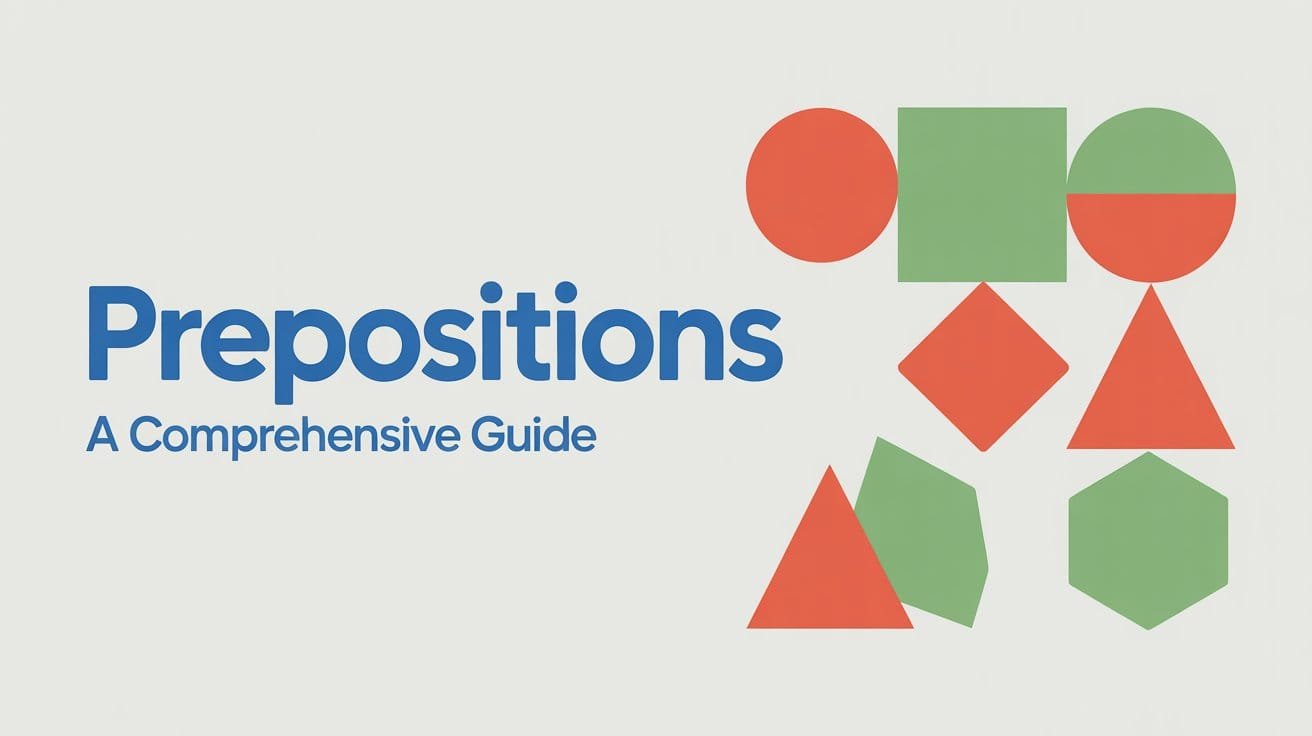Prepositions are those tiny words that link nouns, pronouns, and phrases in a sentence. Prepositions might seem small, but they play a huge role in conveying relationships and connecting different elements in our language.
They help us describe relationships in both concrete and abstract terms. From describing physical locations (“The book is on the table”) to indicating time (“She’ll arrive at 3 o’clock”), prepositions are the key to expressing ideas accurately.
What Are Prepositions?
Simply put, prepositions are words that show the relationship between nouns or pronouns and other words in a sentence. They often indicate location, direction, time, or the way things are done. Think of them as connectors that help us understand where things are, when they happen, and how they relate to each other. Examples of common prepositions include “in,” “on,” “at,” “from,” “to,” “with,” “about,” and many more.
Why Are Prepositions Important?
Understanding prepositions is crucial for effective communication. Think of prepositions as the glue that holds sentences together. Without them, our language would lack clarity and coherence. Imagine trying to explain where you’re going, when an event occurred, or how something is done without using prepositions – it would be quite a challenge, right? Let’s try to understand this using an example:
Imagine constructing a sentence without using prepositions:
Sentence without Prepositions: “She went the store.”
This sentence lacks the essential connecting elements that prepositions provide.
Sentence with Prepositions: “She went to the store.”
In this revised sentence, the preposition “to” establishes the relationship between “she” and “store,” indicating the direction of her movement. This tiny word, “to,” transforms a fragment into a complete, understandable sentence.
Preposition Examples
Here’s a list of common prepositions to get you started:
| above | across | after | against |
| along | among | around | at |
| before | behind | below | beneath |
| beside | between | beyond | but |
| by | concerning | considering | despite |
| down | during | except | for |
| from | in | inside | into |
| like | near | of | off |
| on | onto | out | outside |
| over | past | regarding | round |
| since | through | to | toward |
| under | underneath | until | up |
| upon | with | within | without |
Examples of Prepositions Used in Sentences
- The cat jumped off the counter.
- He is hiding under the bed.
- The library is across the street.
- The keys are beside the door.
- The plane flew above the clouds.
- The restaurant is near the cinema.
- The meeting is scheduled for 3 PM.
- She sat between her two friends.
- Despite the rain, they played outside.
- We waited patiently for the bus at the corner of the street.
- He has been working diligently since early morning on his research paper.
Common Mistakes with Prepositions
It’s not uncommon to make mistakes with prepositions, even for native English speakers. Here are a few common errors to watch out for:
1. Confusing “In” and “On” for Time:
One of the common mistakes learners make is using “in” and “on” interchangeably when talking about time. However, these two prepositions have distinct uses when it comes to expressing time.
- Use “in” when referring to longer periods or durations.
- Correct: I’ll see you in a week.
- Correct: We’ll complete the project in a few months.
- Use “on” when specifying a particular date or day of the week.
- Correct: The meeting will be held on Monday.
- Correct: The party is happening on the 15th of August.
2. Misusing “At” and “In” for Places:
Another common mistake is using “at” and “in” incorrectly when talking about places. These prepositions have different applications depending on the context.
- Use “at” for specific, precise locations or points.
- Correct: She lives at 123 Elm Street.
- Correct: The conference will be at the convention center.
- Use “in” when referring to larger areas, regions, or enclosed spaces.
- Correct: She lives in New York City.
- Correct: The party is in her house.
3. Mixing Up “Between” and “Among”:
Some learners may misuse “between” and “among” when referring to the relationship or distribution among multiple items or people.
- Use “between” when discussing the relationship or comparison of two things or people.
- Correct: The choice is between chocolate and vanilla.
- Correct: The secret remained between the two of us.
- Use “among” when talking about the relationship or distribution involving three or more items or people.
- Correct: She distributed the cookies among her students.
- Correct: The treasure was hidden among the rocks.
By understanding these common mistakes and their corrections, you’ll be better equipped to use prepositions accurately in your English communication. Remember that practice and exposure to various contexts will further enhance your grasp of prepositions and reduce these common errors over time.

